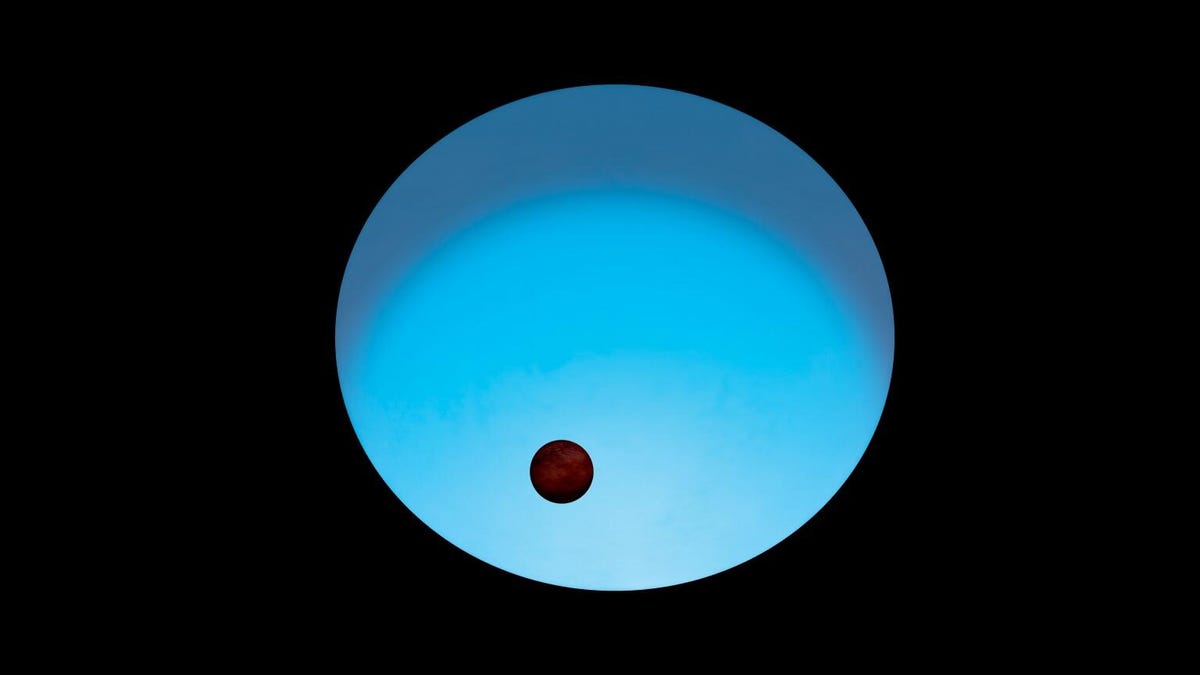First planet spotted by Cheops spacecraft is an extreme alien world
Europe's new world-finder investigated a tortured planet around a bright blue star.

An illustration of the WASP-189 system.
The European Space Agency's shiny new exoplanet-hunting satellite Cheops (short for Characterizing Exoplanet Satellite) has made its first big observation since launching in December, and its target is not exactly the kind of place you'd want to visit.
Cheops' mission is to stare at nearby stars and the planets orbiting them. Its first report is on the brightest "hot Jupiter" identified so far in the cosmos, a gas giant named WASP-189 b.
"Only a handful of planets are known to exist around stars this hot, and this system is by far the brightest," said astrophysicist Monika Lendl at the University of Geneva, in a statement. Lendl is lead author of a paper on the newfound planet published in the current issue of Astronomy and Astrophysics.
To envision WASP-189 b, you need to imagine taking a gas giant like Jupiter and moving it much closer to the sun -- well within the orbit of Mercury -- like giving someone a front row seat at a theater. Or even a seat on the edge of the stage.
The planet is so close to its star, WASP-189 (also known as HD 133112), that it completes a full orbit in under three days.
To turn up the extremes even more, note that this star is larger and a few thousand degrees hotter than our sun, making it appear to glow blue. The hot Jupiter encircling it is perhaps better described as a barbecued Jupiter.
Not surprisingly, this cosmic address doesn't lend itself to very pleasant weather on the surface of the planet, where temperatures can reach a toasty 5,792 degrees Fahrenheit (3,200 Celsius). This makes WASP-189 b one of the most extreme and hottest planets discovered by astronomers so far, a place where even iron turns to gas. In a word, this place is mega-uninhabitable.
"We also saw that the star itself is interesting," adds Lendl. "It's not perfectly round, but larger and cooler at its equator than at the poles, making the poles of the star appear brighter."
The star also spins on its axis so fast that it bloats outward at its equator. Adding to the weirdness is the inclined orbit of WASP-189 b, which traces a kind of diagonal across the face of its star, passing near its brightened poles.
The hope is that studying this extreme system with its tilted orbits, hectic spinning and overheated relationship will help scientists understand hot Jupiters and other exoplanets better, leading us ultimately to new insights about our own planet and its role in the larger universe.
And of course, there's the appreciation for Earth that comes when we add another horror show to the growing list of distant worlds out there that we don't have to survive on.
Correction, Sept. 28: This story initially misstated Cheops' relationship to WASP-189 b. The satellite has investigated the planet, but did not discover it.

